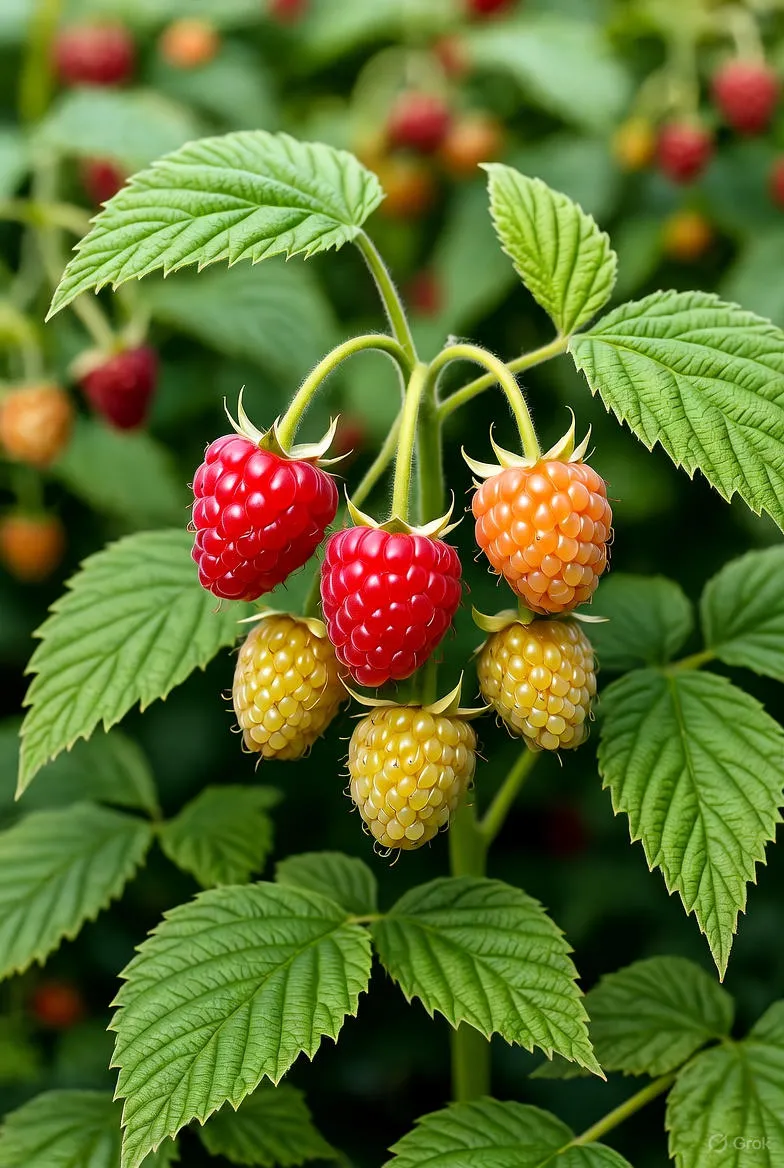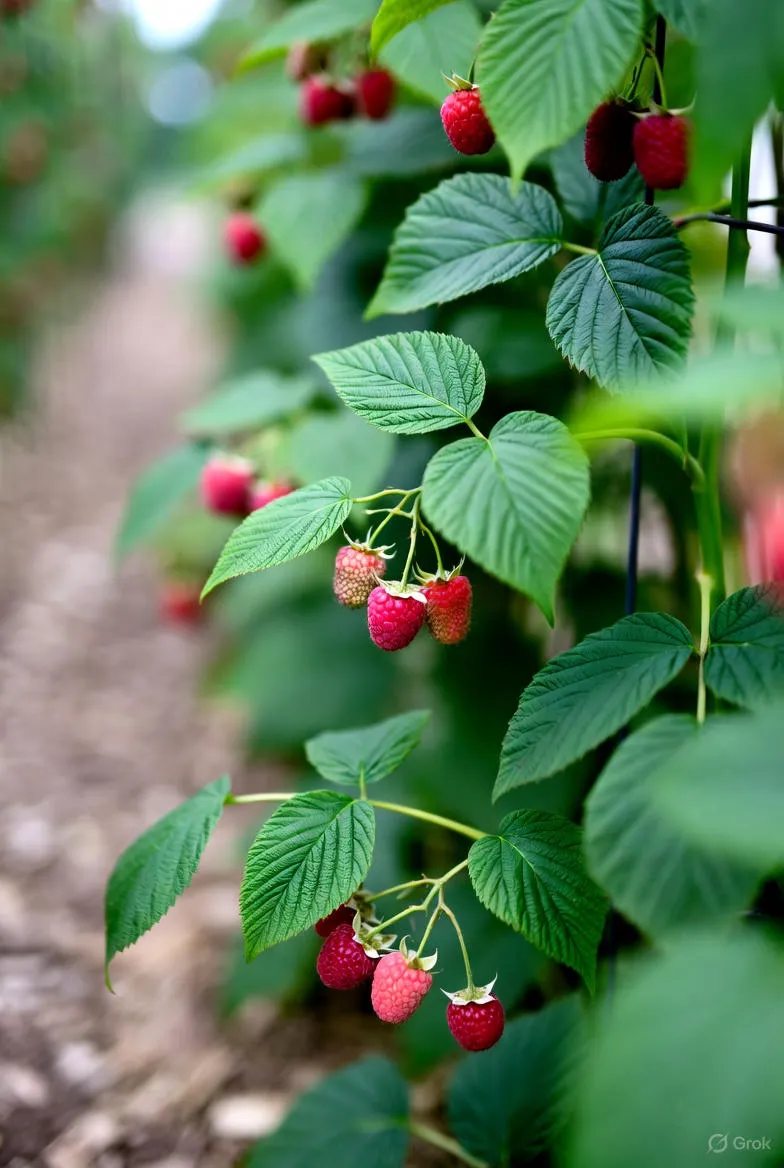How to Grow Raspberries Indoors: A Complete Beginner's Guide to Year-Round Berries
Learn how to grow raspberries indoors with this comprehensive guide. From choosing varieties and setup to care tips and harvesting, enjoy fresh berries year-round in your home.

Introduction to Indoor Raspberry Growing
Growing your own fresh raspberries right in your living room might sound like a dream, but it's entirely achievable with the right setup and care. Raspberries, known for their sweet-tart flavor and vibrant red or golden hues, are typically outdoor plants. However, advancements in indoor gardening techniques, including container planting and hydroponics, make it possible to cultivate them year-round inside your home. Whether you're short on outdoor space, live in a cold climate, or simply want to enjoy homegrown berries regardless of the season, this guide will walk you through everything you need to know.
Indoor raspberry growing offers several benefits: controlled environments minimize pests, consistent conditions promote steady growth, and you can harvest berries even in winter. But success requires attention to light, soil (or hydroponic solution), pruning, and more. By the end of this article, you'll be equipped to start your own indoor raspberry patch and savor the fruits of your labor.
Choosing the Right Raspberry Varieties for Indoors
Selecting the appropriate variety is crucial for indoor success, as space constraints and light limitations favor compact, productive plants. Raspberries come in two main types: summer-bearing (florocanes) that fruit on second-year canes, and everbearing (primocanes) that produce on new growth, often yielding two crops per year. For indoors, opt for dwarf or compact varieties that stay under 4-5 feet tall to fit in pots or hydro systems.
- Heritage: An everbearing red variety with large, firm berries. It's disease-resistant and adaptable to containers, producing from midsummer to fall.
- Autumn Bliss: A compact autumn-fruiting type with sweet, juicy red raspberries. Grows to about 5 feet but can be pruned shorter.
- Fall Gold: Everbearing yellow raspberries with a milder flavor. Thrives in pots and handles indoor conditions well.
- Ruby Beauty: Dwarf summer-bearing, thornless, and self-supporting up to 3 feet, ideal for small spaces.
- BonBonBerry ‘Yummy’®: Nearly thornless primocane with large red fruits; stays compact at around 1.5 feet.
Start with bare-root or potted plants from a reputable nursery to ensure healthy stock. If you're adventurous, you can grow from seeds extracted from store-bought berries, but this takes longer (1-2 years to fruit) and has lower success rates.
Gathering Materials and Setting Up Your Space
Before planting, assemble the essentials. For soil-based growing, you'll need large pots (at least 5-10 gallons for mature plants) with drainage holes, a well-draining soil mix, and support structures. Hydroponic setups require reservoirs, pumps, and nutrient solutions but offer faster growth and higher yields.
Soil-Based Setup
Create a custom soil mix: 40% high-quality potting soil or compost for nutrients, 30% peat moss or coco coir for moisture retention and acidity, 20% perlite or vermiculite for drainage, and 10% composted pine bark for aeration. Aim for a pH of 5.5-6.5—test and adjust with sulfur if needed. Terracotta pots are best as they prevent root overheating.
Hydroponic Setup
For soilless growing, choose a Deep Water Culture (DWC) system for beginners: a reservoir, net pots, air pump with stones, and grow medium like rockwool cubes. Use a pH-balanced nutrient solution (EC 1.5-2.5 mS/cm). Systems like the LetPot Max simplify automation with timers and apps.
Placement matters: Position near a south-facing window for natural light, supplemented by full-spectrum LED grow lights (400-600 watts) providing 12-16 hours daily. Maintain room temperatures of 65-75°F (18-24°C) daytime and 55-60°F (13-15°C) at night, with 40-60% humidity. Use fans for air circulation to mimic outdoor breezes and prevent mold.
Step-by-Step Planting Guide
- Prepare Your Plants: If using bare-root canes, soak roots in water for 1-2 hours. For potted starts, gently remove from nursery pots.
- Fill the Container: Add a 2-inch gravel layer for drainage, then half-fill with soil mix (or set up hydro reservoir with nutrient solution).
- Plant the Canes: Position so the crown (where roots meet canes) sits at soil level. Space multiple canes 12-18 inches apart in larger pots. For hydro, secure in net pots with medium.
- Water and Mulch: Thoroughly water to settle the medium, then add 2 inches of organic mulch like shredded bark to retain moisture.
- Initial Support: Install a trellis or stakes immediately, tying canes loosely to encourage upward growth.
Plant in late winter or early spring to align with natural growth cycles. Indoors, you control the 'season,' so start anytime with proper lighting.
Daily and Weekly Care Routine
Watering
Raspberries need consistent moisture without sogginess—aim for soil that's damp like a wrung-out sponge. Water deeply when the top inch dries out, using room-temperature rainwater or filtered tap water. In hydroponics, top off the reservoir weekly and change the full solution every 2-3 weeks to prevent nutrient buildup.
Fertilizing
Feed every 4-6 weeks with a balanced, slow-release fertilizer (NPK 10-10-10) during vegetative growth, switching to high-potassium (5-10-10) for fruiting. In hydro, use pre-mixed solutions adjusted for stages: nitrogen-rich for seedlings, phosphorus-potassium for blooms. Avoid over-fertilizing to prevent burn—watch for yellow leaves signaling deficiencies.
Lighting and Temperature Control
LED grow lights are non-negotiable indoors; position 12-18 inches above plants, adjusting as they grow. Use timers for 14 hours on, 10 off to simulate summer. Thermostats and humidifiers maintain ideal conditions; a slight drop at night encourages dormancy and better fruit set.
Pruning for Productivity
Pruning is key to indoor success, controlling size and boosting yields. For everbearing varieties, cut all canes to the ground in late winter, then trim new growth to 3-4 feet. Remove spent floricanes after harvest, thinning to 4-6 strong canes per plant. Lateral branches should be shortened to 6-12 inches post-fruiting. Use clean shears and prune in 'dormancy' (reduced light period) to mimic seasons.
Common Pests and Diseases Indoors
Controlled environments reduce risks, but vigilance is essential. Inspect weekly under leaves and stems.
Pests
- Aphids and Spider Mites: Tiny sap-suckers causing curled leaves. Blast with water or apply neem oil spray weekly.
- Whiteflies: Use yellow sticky traps and insecticidal soap.
- Thrips: Treat with beneficial nematodes in soil.
Diseases
- Root Rot: From overwatering; ensure drainage and use hydrogen peroxide dips for hydro roots.
- Powdery Mildew: White powder on leaves; improve airflow and apply baking soda solution (1 tbsp per gallon water).
- Gray Mold (Botrytis): Fuzzy growth in humidity; remove affected parts and lower moisture.
Prevention: Quarantine new plants, sterilize tools, and introduce ladybugs for natural pest control. Organic remedies keep your harvest safe for eating.
Harvesting Your Indoor Raspberries
Patience pays off—expect fruit in the first year for everbearers, second for summer types. Berries ripen in 24-48 hours, turning fully colored and easily detaching with a gentle tug. Harvest every 2-3 days in peak season (up to 1-2 quarts per plant annually). Pick in the morning when cool for best flavor. Post-harvest, prune immediately to redirect energy to new growth.
Store extras by freezing on trays then bagging, or make jams for year-round enjoyment. Indoor yields can match outdoor with optimal care, providing fresh berries even in December.
Tips for Troubleshooting and Maximizing Yields
Yellowing leaves? Check pH or nitrogen levels. Leggy growth? Increase light intensity. Poor fruit set? Ensure pollination—gently shake plants or use a soft brush for indoor bees' absence.
To boost production: Rotate pots quarterly for even light, repot every 2 years with fresh medium, and experiment with CO2 enrichment via open windows. Track progress in a journal to refine your method over seasons.
For hydro enthusiasts, monitor EC closely—spikes indicate imbalances. Soil growers, incorporate worm castings for natural microbes. Remember, raspberries thrive on neglect once established, so don't fuss excessively.
Conclusion: Savor the Sweet Success of Homegrown Berries
Growing raspberries indoors transforms your home into a productive oasis, delivering antioxidant-rich treats at your fingertips. From selecting compact varieties to mastering pruning and pest control, each step builds toward a rewarding harvest. Start small with one pot, scale up as confidence grows, and soon you'll be sharing surplus berries with friends. Embrace the joy of indoor gardening—your kitchen table bounty awaits!
(Word count: 1,248)


